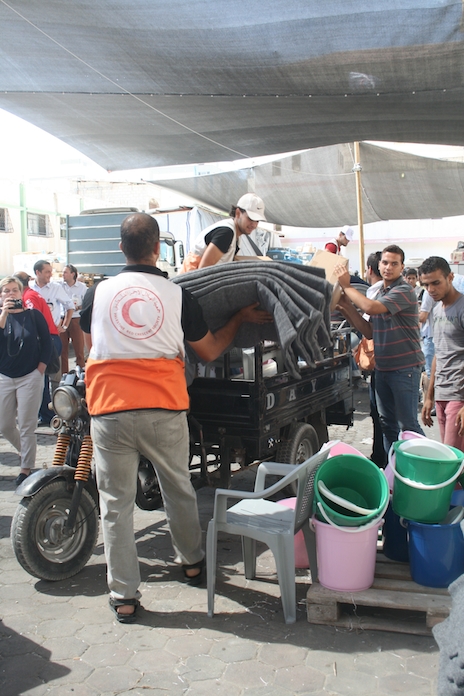
By Tommaso Della Longa – IFRC
It could easily seem a paradise. If you look at Gaza through beautiful beaches, palms, sea shore, you really feel that it could be a marvellous place. But, in daily life, it is like hell. The first words coming into my mind, when we enter the Strip, are destruction, dust, anger, desperation, huge urgent humanitarian needs. And yet we also meet smiling children.
When we start the field visit with Palestine Red Crescent Society, we visit cities that have become ghost towns. Beit Hanoun, Jabalia, Shujaiya have been heavily bombed. Some of residents tell us that Shujaiya was hit by 700 missiles in only one day. As we enter those areas, the feeling is overwhelming: some children have the strength to smile, some shout for international intervention, others welcome us.
After we have entered Shujaiya, all the participants of the Red Cross Red Crescent emergency meeting stop to speak for a while and the common words are “unbelievable” or “horrible”. Some Gazans – after the ceasefire – decide to live in the middle of the ruins. A very risky decision due to unexploded bombs and the risk of collapse. But they prefer to stay there, to restart as much as they can their life.
While we pass through Beit Hanoun, some people are cleaning the streets, others are fixing up shops. “We don’t have any more hope,” says a women near the Jabalia branch of the Red Crescent. “We cannot leave and we cannot receive anything inside. Our children have experienced three wars in five years. We don’t have any safe place where to stay. What we can expect now? Nothing.”
People want to speak with us, to understand what we think of situation and what we see on the future. Everyone is waiting for an answer from the international community, not only in terms of relief, but in terms of sustainable solutions for their daily life.
The last hostilities left 2,133 dead, 11,100 injured, 110,000 people currently displaced. But these figures only scratch the surface of the actual needs.
During the emergency meeting, school has restarted. It was incredible how the people struggle to give to the children a uniform and the right materials to learn. They want to return to normal life, but they are also scared about the future. “The world has to help us, at least before the next war,” Khaled says in front of a shop in Gaza city.
The first field visit ends with a visit to the Red Crescent’s warehouse where family kits are being prepared for distribution. And then, in front of Al Quds hospital, which was damaged during hostilities, we meet some people – mostly teenagers – who were injured and disabled during the conflict.
And here I find one of the great unifying forces: football. One of the group is a Roma supporter and tells me his dream is to have a Francesco Totti shirt. In the middle of this hellscape – surrounded by damaged buildings and the other effects of shelling, in the midst of scarcity of water and power – we can talk about our shared passion.
We talk, smile. People are resilient. This is Gaza.